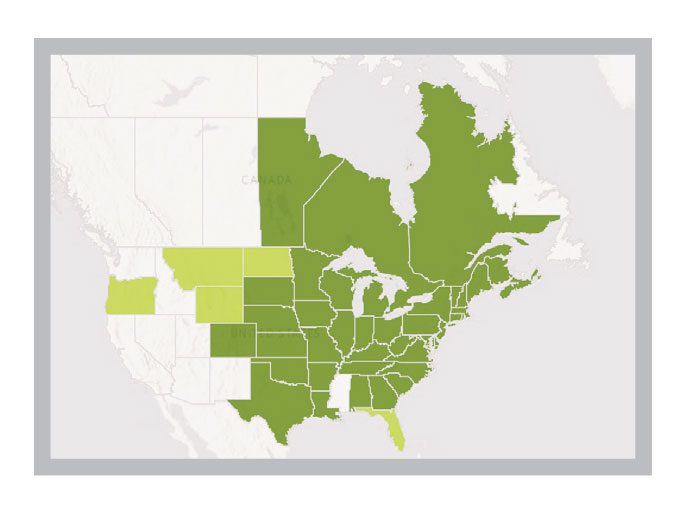2/1/2020
EAB Update
JC Chong

Can you believe it? We’ve been talking about emerald ash borer (EAB) for almost 20 years. Since its first detection in Ohio in 2002, EAB hasn't slowed down its quest to conquer the U.S. The borer was found in my home state of South Carolina in 2017, and in Maine, South Dakota and Vermont in 2018. Mississippi and Florida are now the two lone states in the South that haven't reported EAB infestation.
Although no new states were put on the “infested” list in 2019, USDA-APHIS tallied 104 new county level detections. We closed 2019 by seeing new counties placed on the “infested” list or under EAB quarantine in December.
Kansans have already been dealing with EAB since 2012, with its first detection in Wyandotte County (west of Kansas City). Afterward, EAB was found in Johnson (2013), Leavenworth (2014), Douglas (2015), Jefferson (2015), Atchison (2016), Doniphan (2017) and Shawnee counties (2017), all of which are near Kansas City. Miami County (south of Kansas City) and Jackson County (north of Topeka) were reported as EAB-positive in 2019. Quarantine plans for Jackson and Miami counties are currently being drawn up.
EAB was first confirmed in Tennessee in 2010. EAB quarantines currently exist for 63 counties there, all of which are in central or eastern Tennessee. Lewis County (southwest of Nashville) is the newest addition to the quarantine list.
Visit the Emerald Ash Borer Information Network for more information at www.emeraldashborer.info. A very useful document is the third edition of Insecticide Options for Protecting Ash Trees, a bulletin developed to answer questions and offer management options to tree care specialists, arborists and homeowners. GP